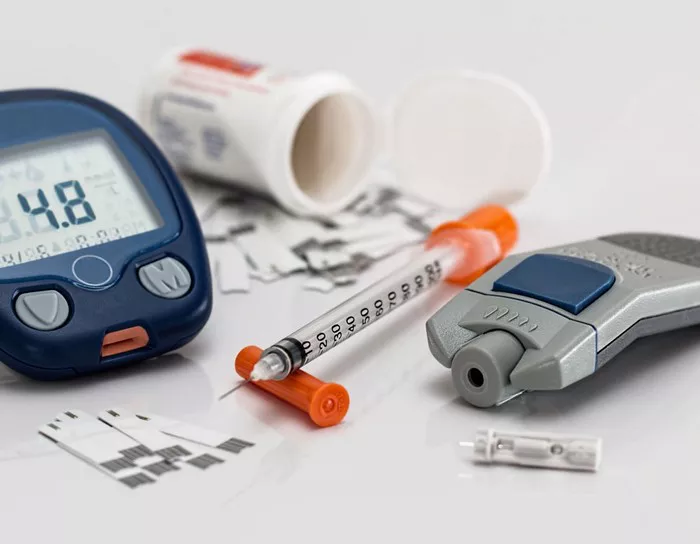Insulin is a hormone crucial for regulating blood sugar levels by facilitating the uptake of glucose into cells for energy production and storage. In individuals with diabetes mellitus, insulin therapy plays a vital role in managing the condition and preventing complications. There are various types of insulin available, each with distinct onset, peak, and duration of action, allowing for personalized treatment regimens tailored to individual needs. In this comprehensive article, we will explore the five main types of insulin, including their characteristics, indications, administration, and considerations for optimal management of diabetes.
1. Rapid-Acting Insulin
- Overview: Rapid-acting insulin analogs are designed to mimic the rapid onset of insulin secretion seen in response to meals, making them ideal for controlling postprandial blood sugar spikes.
- Examples: Common rapid-acting insulin analogs include insulin lispro (Humalog), insulin aspart (NovoLog), and insulin glulisine (Apidra).
- Onset, Peak, Duration: Rapid-acting insulins typically have an onset of action within 15 minutes, peak action within 1 to 2 hours, and duration of action ranging from 3 to 5 hours.
- Administration: Rapid-acting insulins are administered subcutaneously using insulin pens or syringes and are typically injected immediately before or shortly after meals.
- Indications: Rapid-acting insulins are used to control postprandial blood sugar levels and can be administered in combination with basal insulin or as part of basal-bolus insulin regimens.
2. Short-Acting (Regular) Insulin
- Overview: Short-acting, or regular, insulin is a human insulin formulation with a slower onset and longer duration of action compared to rapid-acting insulins.
- Examples: Common short-acting insulin formulations include regular human insulin (Humulin R, Novolin R).
- Onset, Peak, Duration: Short-acting insulins typically have an onset of action within 30 minutes to 1 hour, peak action within 2 to 4 hours, and duration of action ranging from 6 to 8 hours.
- Administration: Short-acting insulins are administered subcutaneously using insulin pens or syringes and are typically injected 30 minutes to 1 hour before meals.
- Indications: Short-acting insulins are used to control blood sugar levels throughout the day and can be administered as part of basal-bolus insulin regimens or in combination with intermediate- or long-acting insulins.
3. Intermediate-Acting Insulin
- Overview: Intermediate-acting insulins are designed to provide basal insulin coverage over an extended period, helping to control fasting and between-meal blood sugar levels.
- Examples: Common intermediate-acting insulin formulations include neutral protamine Hagedorn (NPH) insulin (Humulin N, Novolin N).
- Onset, Peak, Duration: Intermediate-acting insulins typically have an onset of action within 1 to 2 hours, peak action within 4 to 8 hours, and duration of action ranging from 10 to 16 hours.
- Administration: Intermediate-acting insulins are administered subcutaneously using insulin pens or syringes and are typically injected once or twice daily to provide basal insulin coverage.
- Indications: Intermediate-acting insulins are used to control fasting and between-meal blood sugar levels and are often administered in combination with rapid-acting or short-acting insulins.
4. Long-Acting Insulin
- Overview: Long-acting insulins provide basal insulin coverage over an extended period, helping to maintain stable blood sugar levels between meals and overnight.
- Examples: Common long-acting insulin analogs include insulin glargine (Lantus, Basaglar, Toujeo), insulin detemir (Levemir), and insulin degludec (Tresiba).
- Onset, Peak, Duration: Long-acting insulins typically have a gradual onset of action within 1 to 2 hours, no pronounced peak action, and duration of action ranging from 16 to 24 hours or longer.
- Administration: Long-acting insulins are administered subcutaneously using insulin pens or syringes and are typically injected once daily at the same time each day.
- Indications: Long-acting insulins are used to provide basal insulin coverage throughout the day and night, reducing the risk of hypoglycemia and providing flexibility in insulin dosing.
5. Ultra-Long-Acting Insulin
- Overview: Ultra-long-acting insulins are the newest class of insulin analogs designed to provide basal insulin coverage with a prolonged duration of action, allowing for once-daily or less frequent dosing.
- Examples: The only ultra-long-acting insulin currently available is insulin degludec (Tresiba).
- Onset, Peak, Duration: Ultra-long-acting insulins have a gradual onset of action within 1 hour, no pronounced peak action, and a duration of action of up to 42 hours or more.
- Administration: Ultra-long-acting insulin (insulin degludec) is administered subcutaneously using insulin pens or syringes and can be injected once daily at the same time each day or less frequently in some cases.
- Indications: Ultra-long-acting insulins provide basal insulin coverage with a more stable and prolonged duration of action compared to other long-acting insulins, offering flexibility in dosing and reducing the risk of hypoglycemia.
Conclusion
Insulin therapy plays a vital role in the management of diabetes mellitus, providing essential support for regulating blood sugar levels and preventing complications. Understanding the characteristics and nuances of the different types of insulin is crucial for healthcare providers and individuals with diabetes to develop personalized treatment regimens tailored to individual needs. By selecting the most appropriate type of insulin, considering factors such as onset, peak, duration of action, and individual lifestyle factors, healthcare providers can optimize glycemic control and improve overall health outcomes for individuals with diabetes. Through education, awareness, and ongoing support, individuals with diabetes can effectively manage their condition and lead fulfilling lives while minimizing the risk of complications associated with this chronic disease.


























